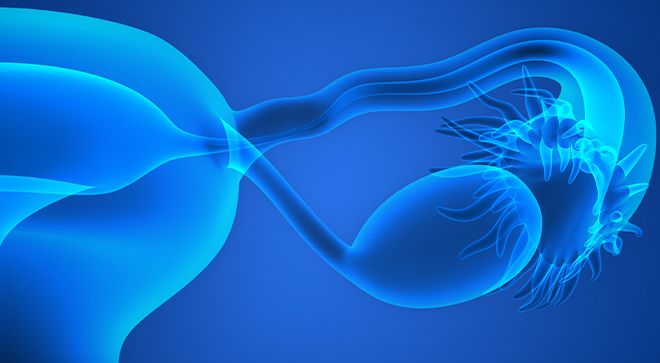Blog
Article
I Learned About the Omentum After Losing Mine to Cancer
Author(s):
Having my omentum removed after an ovarian cancer diagnosis impacted my quality of life.

In 2016, 15 months after my cancer diagnosis, and nine months after completing chemo, I went on my first work trip to Washington, D.C. On the way home, I called my oncologist’s office and scheduled an appointment. I was bloated; I looked four months pregnant, again. “Bloating,” or abdominal distension as I prefer to call it, is one of the symptoms of ovarian cancer; I had experienced abdominal distension several months before I found out I had cancer.
Here I was again: my abdomen looking like it did before I had cancer and I was terrified that I was experiencing a recurrence. Thankfully, blood work and scans showed no signs of cancer. Then, I spent months conducting detective work, going to different medical professionals trying to get to the bottom of my digestive issues.
After months of asking questions and consulting with my doctors, it became clear that a little-known organ, the omentum, was likely a piece of the puzzle.
Momentum for Omentum Research
Recent research is digging into this fascinating organ across the medical field. It is featured in several recent research articles highlighting applications with brain cancer, lymphedema and Alzheimer’s Disease.
Yet, the first time I heard the word “omentum” was reading my 2014 ovarian cancer staging report which listed “omentectomy.” When I asked about it, doctors said that I did not need the organ, and that it was just a layer of fat. While that information is true, the omentum is also part of the immune system and the lymphatic system and is well known to help process abdominal fluids. The organ is often removed in ovarian cancer staging surgery, as well as some other cancer surgeries, due to its propensity to “gather” cancer cells.
Thankfully, other parts of my body have picked up most of the slack in the 10 years since my omentectomy. However, in spite of the fact that I absolutely can live without it — and that an omentectomy was necessary for my cancer treatment — it clearly plays a big role in the body. Knowing more about it would empower me as well as thousands of other cancer survivors living without an omentum to improve their quality of life after surgery.
With the help of several wonderful medical professionals, we realized the lack of an omentum, with its ability to help process abdominal fluids, was one of the reasons I was experiencing the intense abdominal distension and consuming salty food was a trigger.
I later found out that I wasn’t the only one.
Over the next several months, I connected with other cancer survivors living without an omentum and learned as much as I could about this mysterious organ. Together with a small team of volunteers also interested in the omentum, we formed The Omentum Project. With the help of many volunteers, medical professionals and the Nancy B. Clemente Cancer Fund, we have launched an Institutional Review Board-approved study, “Processing Salt with/without an omentum.”
Cancer Recurrence and Renewed Determination
This omentum momentum (pardon the pun) screeched to a halt when I experienced a recurrence of ovarian cancer in 2023. After surgery and chemo, I am once again NED (no evidence of disease).
My recurrence has given me a renewed determination to continue to work with The Omentum Project team to move forward with learning more about living without an omentum. I have consistently experienced digestive issues from 2015 on; the progression from issues related to my omentectomy to those related to a recurrence of ovarian cancer were very, very subtle — too hard for me to tease apart. Having more information about how to live without an omentum, and how to live with fewer digestive issues, may help to tease out cancer recurrence symptoms in women like me.
Beating cancer is a feat in and of itself. Let’s help these survivors live the best lives they can post-cancer.
About the Author
Meg is a two-time ovarian cancer survivor (2014 & 2023). She enjoys walking, biking, tai chi and yoga as well as spending time with her family and friends.Together with The Omentum Project team, she is determined to help cancer survivors living without an omentum. Learn more: theOmentumProject.org
This post was written and submitted by Meg Wilkinson. The article reflects the views of Wilkinson and not of CURE®. This is also not supposed to be intended as medical advice.
For more news on cancer updates, research and education, don’t forget to subscribe to CURE®’s newsletters here.





